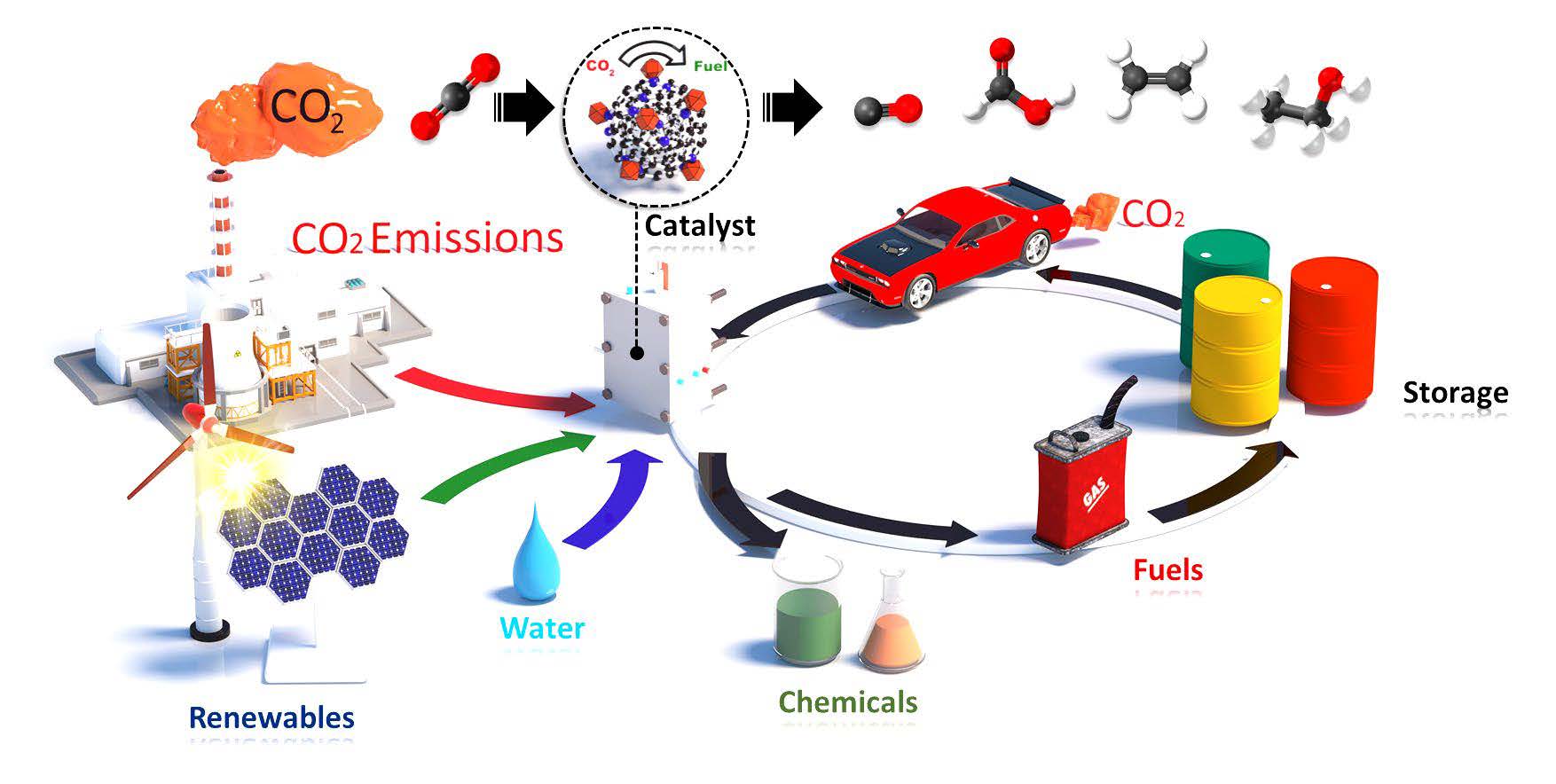 Abstract: Currently, the global emission of greenhouse CO2 is over 36 billion tons per year. Consequently, the atmosphere's CO2 concentrations have exceeded 400 ppm, which is the highest reported in the last three million years. The accumulation of CO2 is the most critical origin for today's climate change; thus, closing the carbon cycle is vital to reverse the detrimental impacts of climate change. Under this goal, the electrochemical reduction of CO2 into commodity fuels and chemicals via renewable energy is one of the most promising strategies to recycle CO2. Despite significant progress made in electrocatalysis, currently there are no commercial-grade catalysts or reactor systems that meet projected benchmarks for CO2 electroreduction. Therefore, more efficient catalysts and electrochemical reactors should be developed by understanding catalytic processes, local microenvironments, and underlying interfacial phenomena and chemistry.
Abstract: Currently, the global emission of greenhouse CO2 is over 36 billion tons per year. Consequently, the atmosphere's CO2 concentrations have exceeded 400 ppm, which is the highest reported in the last three million years. The accumulation of CO2 is the most critical origin for today's climate change; thus, closing the carbon cycle is vital to reverse the detrimental impacts of climate change. Under this goal, the electrochemical reduction of CO2 into commodity fuels and chemicals via renewable energy is one of the most promising strategies to recycle CO2. Despite significant progress made in electrocatalysis, currently there are no commercial-grade catalysts or reactor systems that meet projected benchmarks for CO2 electroreduction. Therefore, more efficient catalysts and electrochemical reactors should be developed by understanding catalytic processes, local microenvironments, and underlying interfacial phenomena and chemistry.
This talk will address the effects of structure, surface, and interfacial modifications of nanomaterials that endow selective, efficient, and stable electrocatalysts for CO2 conversion. Since the catalyst performance and the electrode architecture are two critical factors in determining the overall efficiency of a system, this presentation will first showcase the impact of heteroatom-doped carbon catalysts toward electrochemical CO2 conversion to CO, with the examples of nitrogen-doped ultrananocrystalline diamond and nitrogen and sulfur co-doped carbon nano onions (CNOs). The atomic-scale visualization of heteroatom dopants in CNOs will also be highlighted. Experimental studies in parallel with theoretical calculations will be presented to gain an in-depth insight into reaction mechanisms. In the next part of this talk, the improvement of electrode microstructures and interfaces will be presented. These changes have significantly enhanced the selectivity and activity toward CO2 electroreduction to ethanol. Thus, this talk will demonstrate how nitrogen-doped CNOs (N-CNOs) can alter the local electronic properties of copper catalysts and improve the composite catalyst's interfacial properties to boost ethanol selectivity. Furthermore, the construction of scalable and durable electrode architecture using N-CNOs and copper will also be presented. Ultimately, this talk uncovers the underlying importance of tailoring the microstructures, surface chemistries, and electrode interfaces of heteroatom-doped carbon to improve efficiency and selectivity for CO2 electroreduction. These findings lay an important foundation for the development of efficient electrocatalysts in the future.
